Friends of Myles Standish State Forest
East Head Reservoir Eco Tour

Inkberry
Not All Evergreens are Pines
Look around. You are in an Inkberry (Ilex glabra) colony, spreading by underground rhizomes, which are underground stems. Those rhizomes sprout into new bushes nearby, such as is seen along the boardwalk.
Inkberry
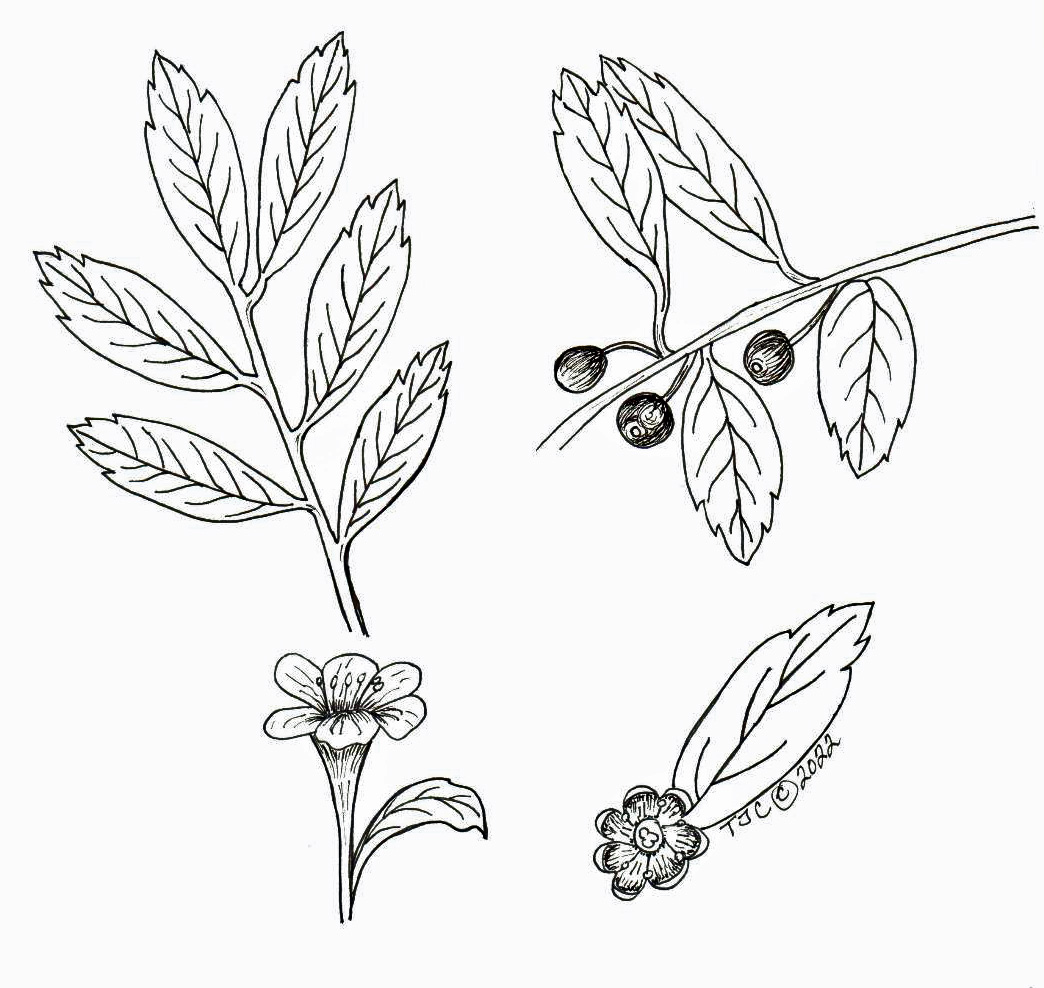 Ilex glabra
Ilex glabra
Inkberry is a native, broadleaved shrub that is green all year round and grows in moist, acidic, well drained soil with good sunlight. The four foot tall bushes form a thick hedge. As the plant grows, the bottom branches tend to lose their leaves, giving the lower part of the plant an open and leggy look.
Green in Winter
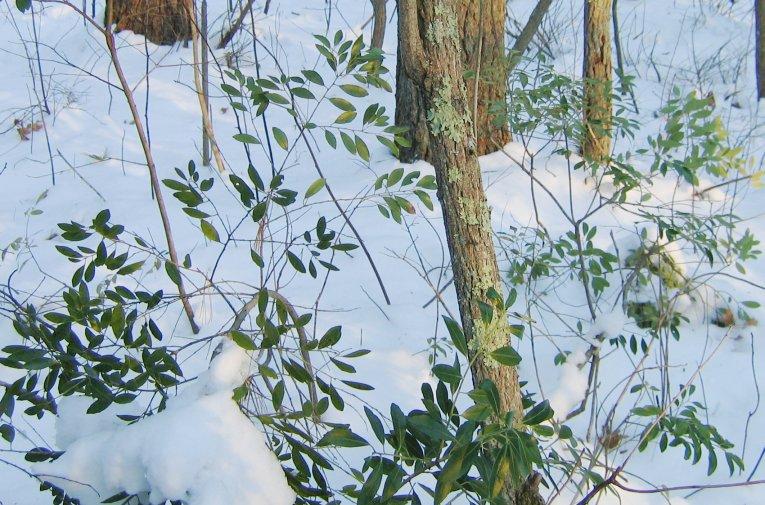
- Salicicola.com
Images are from Salicicola.com maintained by Irina Kadis, Curatorial Assistant at the Arnold Arboretum, who has surveyed plants in Myles Standish State Forest. Find “Checklists” of Myles Standish plants on that website.
Inkberry is a member of the genus Ilex. This is the “holly” genus, with the “American Holly” considered the signature representative of the genus. Ilex evolved about twenty million years ago. Since then the genus has evolved into over five hundred species of which over 400 are evergreens. The word Ilex comes from Latin and means evergreen oak, which it somewhat resembles. The species name glabra means “hairless”, “bald” or “smooth”.
Smooth Leaves with Clear-cut Margins
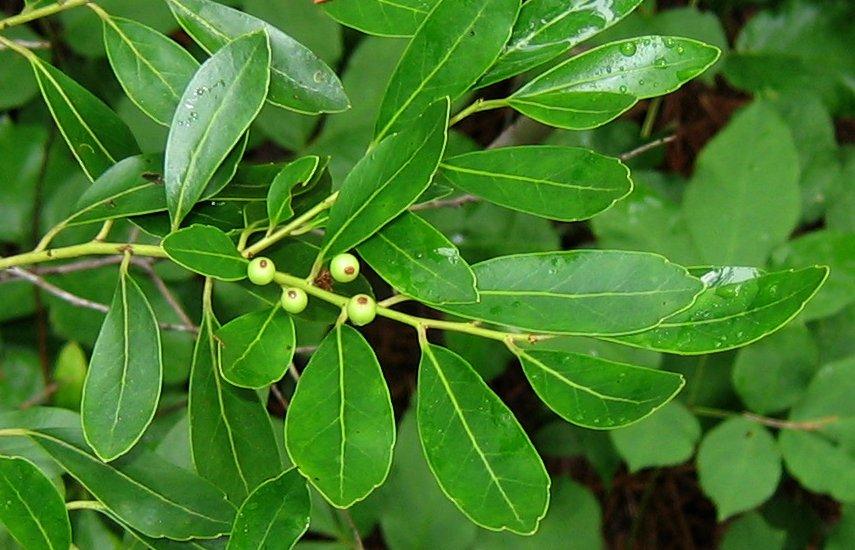
- Salicicola.com
The leaves are “smooth” with thick margins which “outline” each leaf. The leaves, which contain a small amount of caffeine are eaten by deer, quail, opossum, coyote, small rodents, turkey and other birds. Native Americans used dry roasted leaves to brew a drink which was called “Appalachian Tea”.
Ilex are dioecious, which means that male and female reproductive organs are in separate individuals. Both male and female inkberry bushes flower in May and June.
The small white flowers attract a host of pollinators, and are a favorite of bees, which results in delicious honey.
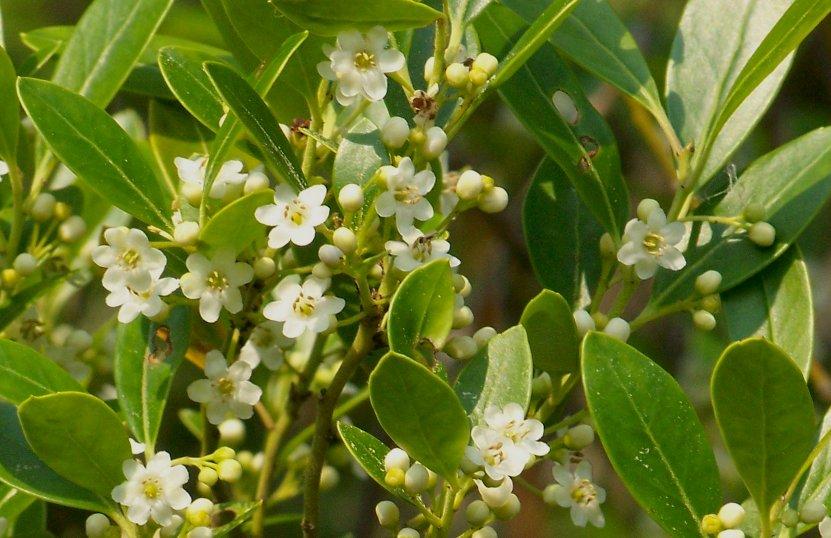
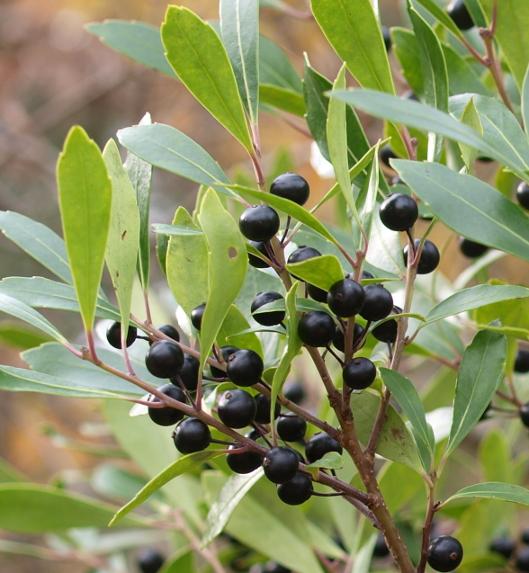
- Salicicola.com
In September to November, inkberry produces black seeds that require several freezing and thawing cycles to become palatable many forest friends. In fact, the berries are considered an important source of winter forage for many animals including deer, raccoon, squirrels, turkey and others. These animals spread the seeds to make new colonies elsewhere. In addition to using leaves, Native Americans also dried and roasted the berries to make a liquid similar to tea.
For more information:
Salicicola.com has checklists of Myles Standish plants with many more pictures.
In wikipedia.com see Ilex glabra
In coastalplainplants.com see Ilex glabra